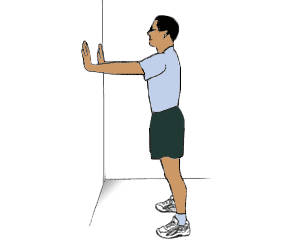Isometric exercises have been around for quite some time, and they became popular in the 1970s. At that time, equipment like The Bull-Worker was all the rage. However, with the rise of gym movement, isometric exercises started to lose popularity. It seemed like the full range of motion was the way to go. But, did we overlook the benefits of static contraction training?
In this article, we will delve deeper into isometric exercises and the benefits they offer. We will explore what isometric exercises are, the benefits they provide, and how to incorporate them into your workout routine. Additionally, we will discuss six isometric exercises that can help you improve your fitness level.
What is Isometric Exercise?
Isometric exercises are a type of exercise in which the length of the working muscle does not change during the exercise. During an isometric exercise, the body is contracting against an immovable object, such as a wall or the floor, causing the muscle to tense, but not change length. In contrast, isotonic contraction occurs when you shorten the distance between two joints, such as when you perform a barbell curl.
The Benefits of Isometric Exercise
Isometric exercises offer a range of benefits that can help you achieve a stronger, leaner, and fitter body. Here are some of the benefits of isometric exercises:
Can be Done Anywhere and Anytime – Without Equipment
One of the biggest advantages of isometric exercises is that they can be done anywhere, anytime, without the need for equipment. You can do isometric exercises in the comfort of your own home, in a hotel room, or at the park.
Nearly 100% of Motor Units in the Muscle Fiber are Activated
During an isometric exercise, nearly 100% of motor units in the muscle fiber are activated. This does not happen with concentric movements. Motor units are groups of muscle fibers that are controlled by a single nerve. Activating more motor units means that you are recruiting more muscle fibers, leading to better muscle development and strength gains.
Strengthens and Conditions the Working Muscle
Isometric exercises can help you strengthen and condition the working muscle. They can also help you improve your muscle endurance and stability.
Improves Posture and Spinal Alignment
Isometric exercises can help you improve your posture and spinal alignment. By performing isometric exercises that target the back, core, and hip muscles, you can improve your posture and reduce the risk of back pain and injury.
Incorporating Isometrics into Your Workout Routine
While isometric exercises are not meant to be your sole form of exercise, they can be incorporated into your workout routine to supercharge your strength and exercise gains. Combining them intelligently with isotonic exercises can take your workout to new heights. Here are six isometric exercises you can incorporate into your workout routine:
- The Plank
- Wall Sits
- Isometric Push-Ups
- Pull Up Static Hold
- Wall Push-Ups
- Isotonic Exercise Sticking Point Statics
1. The Plank
The plank is an isometric exercise that targets the core, hip, and shoulder muscles. To perform the plank, lie face down on the floor and prop yourself up on your elbows so that your body is supported only by the balls of your feet, elbows, and forearms. Keep your back straight in one solid line and hold this position for 30 seconds.
2. Wall Sits
Wall sits are a great isometric exercise for strengthening and toning the legs, particularly the quads. They can be done anywhere, as all you need is a wall.
To perform a wall sit, start by standing with your back against a wall. Slide down the wall until your thighs are parallel to the ground, making sure your knees are directly above your ankles. Hold this position for as long as you can, aiming to increase your time with each set.
Sets and Reps: Start with a 30-second hold and aim to extend to between 2-3 minutes.
3. Isometric Push-Ups
Isometric push-ups are a challenging variation of the classic push-up. They target the chest, triceps, and shoulders, while also engaging the core.
To perform an isometric push-up, start in a plank position with your hands placed slightly wider than shoulder-width apart. Lower your body until your elbows are at a 90-degree angle, and hold this position for as long as possible. Make sure to engage your core and keep your body in a straight line.
Sets and Reps: Start with a 15-second hold and aim to extend to between 1-2 minutes.
4. Pull Up Static Hold
Pull-up static holds are an excellent exercise for targeting the back and biceps, as well as improving grip strength.
To perform a pull-up static hold, grip a pull-up bar with an underhand grip and pull your body up until your chin is above the bar. Hold this position for as long as possible, making sure to engage your back and biceps.
Sets and Reps: Try to hold for 20 seconds and extend until you can achieve the hold for a full minute.
5. Wall Push-Ups
Wall push-ups are a beginner-friendly isometric exercise that targets the chest, shoulders, and triceps.
To perform a wall push-up, stand facing a wall with your palms on the wall at shoulder height. With your back arched, bend your arms to move your chest toward the wall. In the fully contracted position, try to push through the wall while endeavoring to touch the wall with your chest. Hold this position for 30 seconds, making sure to keep pushing into the wall throughout.
6. Isotonic Exercise Sticking Point Statics
Most weight trainers eventually hit a sticking point with an exercise. Take the bench press, for example. There’s usually a point where you struggle to push the weight back up, even if you’ve successfully completed the lift before.
Sticking point statics involve performing an isometric hold at the point in the lift where you typically struggle. For example, if you struggle to push the weight back up during a bench press, you would lower the weight to that point and hold it for as long as possible.
By incorporating sticking point statics into your workout routine, you can target and strengthen your weak spots, helping you to break through plateaus and achieve new levels of strength.
Conclusion
While isometric exercises may have fallen out of favor in recent years, they offer a host of benefits that should not be overlooked. By incorporating isometric exercises into your workout routine, you can improve strength, increase muscle activation, and enhance postural alignment. Additionally, isometric exercises can be done anywhere, without the need for expensive equipment.
So if you’re looking to take your workout to the next level, consider adding some isometric exercises to your routine. You may be surprised at the results you achieve.







